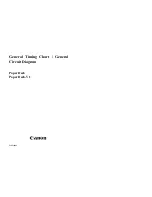
IJ4000 Impulse Jet
Appendix B: Theory of Operation
5765-018 Operations Manual Rev J
Page 55
Appendix B: Theory of Operation
Functional Description
The IJ4000 ink jet system prints text, autocodes (such as product counts or time and date stamps), barcodes, and/or graphics onto products as they travel by
conveyor past stationary print heads. Print can be on any one of, or a combination of, the product's sides. The conveyor speed is monitored using a variable
speed encoder or a built-in fixed speed encoder. Products are detected using a photosensor. The information to be printed is defined as a message and is pro-
grammed into the controller via a user interface.
Impulse Jet 384E and 768E Print Heads
The IJ4000 Impulse Jet print head assembly consists of a piezoelectric impulse jet print engine, a small ink reservoir, intake, purge, and return solenoid valves,
and an electronic controller board to control both printing and fluidic management functions of the print head.
The piezoelectric impulse jet print engine has a nozzle plate with an array of orifices and a corresponding array of piezoelectric crystals. Piezoelectric crystals
expand and contract rapidly based on voltage being supplied to and removed from crystals. Very small ink droplets are ejected as a result of piezoelectric crys-
tals expanding rapidly, creating a pressure pulse to force ink droplets out the orifices. The print engine also incorporates a heater to control the head tempera-
ture, allowing ink viscosity to be maintained over a wide spread of ambient temperatures. The head must be at the correct operating temperature before
printing. The head temperature can be monitored via the LEDs located on the back of the print head. LEDs are provided to show when the heater is on and
when the head is at appropriate temperature.
The print head electronics receive power, as well as clock, data, and latch signals from the controller, to drive the heater and the imaging capabilities of the print
engine. The print head electronics also control the ink management functions.
At the print head, ink flows in through the intake solenoid valve to fill a small print head reservoir. The ink level in the print head reservoir is maintained by a level
detect, sensing the ink level and sending a signal to the S
MART
-IDS to turn on/off the ink pump. The reservoir is vented allowing atmospheric pressure to be
maintained inside the reservoir. The vent is located on the back of the print head and is filtered to ensure debris can not enter the ink reservoir. Ink is fed from
the print head ink reservoir to the print engine via gravity. Capillary action is then utilized to supply the orifices in the nozzle plate with ink.
NOTE
: Since ink is fed to the print engine via gravity, it is important to maintain the print head at a level position during operation.
The print head also incorporates an Automatic Cleaning System (ACS) to remove dirt and debris from the orifice plate. A small vacuum channel has been
designed into the bottom of the nozzle plate. During an ACS cycle, a small amount of ink is pulsed through the orifices. The ACS cycle turns the vacuum pump
on in the S
MART
-IDS, and pulses both the ink pump and purge solenoid to control the flow of ink out the nozzle plate. The ink and debris is vacuumed off the
nozzle plate, and drawn back to the waste collection bottle located in the S
MART
-IDS. An ACS cycle can be manually initiated by pushing the
ACS/Prime
but-
ton located on the back of the print head. The ACS can also be programmed to run at specified times by using the IJ4000-HMI Controller.
When print head priming is required, the ink is pumped directly into the print engine, through the purge solenoid, and out through the return solenoid valve,
allowing air to be pushed out of the head. This is required only during initial set-up and when the print engine has been replaced. The ink is returned and col-
lected in the S
MART
-IDS waste collection bottle. This function can be initiated by pushing in and holding the
ACS/Prime
button located on the back of the head
for 5 seconds.
Another function is the ability to check for 100% print from the print head. This function can be performed by momentarily pressing the
All Channel Print
button
on the rear of the print head while passing a substrate in front of it in a horizontal direction.
A digital level indication is provided by three LEDs located on the top rear of the enclosure. The print head is considered level, as indicated by a central green
LED, when it is /- 1.5° front-to-back, level to the horizon. The digital level is factory calibrated to within 0.2° absolute.
The print head is sealed at many points to protect against liquid ingress that could damage internal components.
















































